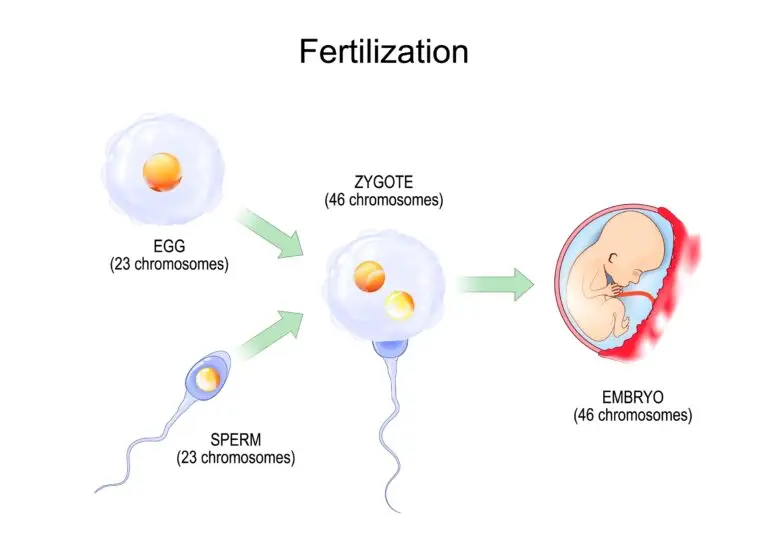Embryo

Table of Contents
What is an Embryo?
An embryo is the early stage of development in multicellular organisms, following fertilization of an egg cell by a sperm cell.
During embryonic development, a zygote (formed by the fusion of sperm and egg) undergoes a series of cell divisions, leading to the formation of a multicellular structure known as the embryo. The term “embryo” is commonly used to refer to the early developmental stage of various organisms, including plants and animals.
Characteristics of Embryos
Cell Division
After fertilization, the zygote, a single cell formed from the union of sperm and egg, undergoes rapid cell division in a process known as cleavage. During cleavage, the zygote divides repeatedly without increasing overall size; this division results in smaller cells known as blastomeres. As these blastomeres continue to divide, they form a compact ball of cells.
This cellular aggregation progresses to become a structure called a blastula, which consists of many cells that will differentiate and develop into various tissues and organs of the organism. This early stage of embryonic development is crucial for establishing the foundation upon which the complex structures of the organism will be built.
Blastula or Blastocyst Formation
The early stage of embryonic development in animals is known as the blastula; in mammals, it is referred to as a blastocyst. The blastula and blastocyst represent a critical phase where the embryo is a hollow sphere of cells.
This structure features a fluid-filled cavity known as the blastocoel in the blastula or the case of the blastocyst; the cavity is part of a more complex structure that includes an inner cell mass destined to form the fetus and an outer layer of cells that will develop into the placenta.
The formation of the blastula or blastocyst is a key step in embryonic development, as it prepares the embryo for the next stages, including implantation in mammals and gastrulation in various animal species, where cells begin to differentiate into the embryo’s various tissues and organs.
Gastrulation
Gastrulation is a critical process during embryonic development where the blastula undergoes morphological changes. Cell movements result in the formation of germ layers—ectoderm, mesoderm, and endoderm—which give rise to various tissues and organs.
Formation of Tissues and Organs
The next phase is organogenesis after gastrulation, a process in embryonic development where the single-layered blastula or blastocyst transforms into a multi-layered structure with distinct germ layers.
During organogenesis, the cells sorted into these germ layers—ectoderm, mesoderm, and endoderm—undergo further differentiation and specialization to form the various tissues and organs of the developing organism.
Each germ layer gives rise to specific types of tissues and organs: the ectoderm develops into the nervous system and skin, the mesoderm forms muscles, bones, and the circulatory system, and the endoderm generates internal organs like the lungs and liver.
Organogenesis is a complex and meticulously regulated process involving various signaling pathways and genetic instructions that guide the cells to their destined roles in the mature organism.
Embryonic Development Stages
The early stages of embryonic development vary among different organisms. In humans, the early embryonic stages include the morula, blastocyst, and gastrula before progressing to the formation of specific tissues and organs.
- Fertilization
- Cleavage
- Morula
- Blastocyst
- Implantation
- Gastrulation
- Neurulation
- Organogenesis
- Fetal Development
- Birth
Related Links
Anatomy
Embryology
Placenta
Yolk